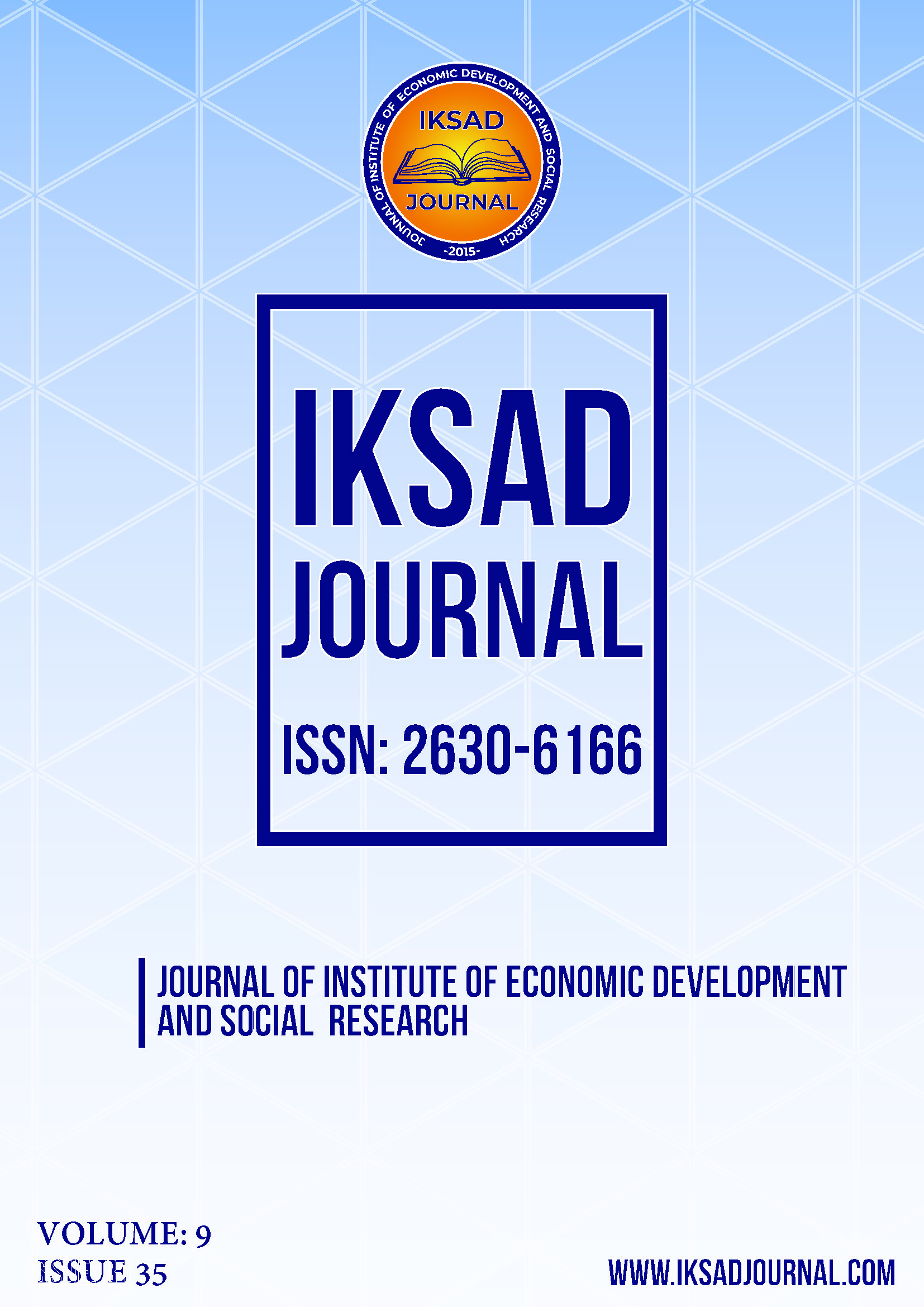Psychogeographic Maps and Mobility in Tony Chakar's Alternative Urbanism Approach
DOI:
https://doi.org/10.5281/zenodo.13200487Keywords:
Tony Chakar, Eyeless Map, Yesterday’s Man, The Sky Over, Beirut, Situationists, Psychogeographic Maps, MobilityAbstract
Thinking about cities, producing ideas or presenting a new mise en scene, the process of city formation, impressions, fragmentations, traces, architectural designs, non-uniform view, mobility, fluidity, heterogeneity, dissolution, transformation, lifestyle, conflicts, wars, the connotations-contradictions it evokes, begin in proportion to seeing and confronting them. In this context, the works of architect and contemporary artist Tony Chakar, which produce an alternative history against the state-supported amnesic official narrative around the crisis of representing the experienced violence history and social trauma of “missing” subjects who are effectively silenced or rendered invisible by the neoliberal denial policies and narratives of Beirut and Beirut city center (Downtown), which is likened to an incubator of religious-ethnic conflicts in the 1975-1990 Lebanese Civil War, will be discussed. In this study, which is shaped around the relationship between war, city, space, memory and architecture, the lost image of the city divided by the civil war, the missing persons of the war, mass graves, modernity and neoliberal economic policies, and the temporarily suspended amnesic existence of the Downtown, which was transferred to the population of the real estate company Solidere (Societé Libanaise, le Développement et la Reconstruction de la Centre Ville de Beyrouth), will be evaluated through Chakar’s works Eyeless Map, Yesterday’s Man and The Sky Over Beirut. These works of the artist, which are an effort and expression of recovery after the civil war, are analyzed by discussing whether the Downtown causes individual and social dissolution, contradiction, anxiety, uncertainty and displacement, accompanied by architectural structures, memories, narratives, mapping, imaginary representations and city walks, around the themes of space, memory and trauma. In addition, the question of whether there is a Lefebvre and Situationist influence on Chakar's work on Solidere's demand for the right to the city in response to new memory spaces is discussed and answered.
References
Abdelhafid Khatib, “Attempt at a Psychogeographical Description of Les Halles”, 1958, Internationale Situationniste#2,http://www.cddc.vt.edu/sionline/si/leshalles.html.sonerişim 05.10.2019.
Andrew Herscher, “Urbicide, Urbanism and Urban Destruction in Kosovo”, Theory and Event 10(2), 2007.
Guy Debord, “Theory of The Derive”, Internationale Situationniste#2, http://www.cddc.vt.edu/sionline/si/theory.html, son erişim tarihi 05.10.2019.
Guy Debord, The Naked City, Paris, 1957.
John Urry, Mobilities, Polity Press, Cambridge&Malden, 2007, s.71.
Michael Schudson, “Dynamics of Distortion in Collective Memory”, Memory Distortion, How Minds, Brains and Societies Reconstruct thePast, Daniel Schacter(ed.), Harvard University Press, Cambridge, London, 1997.
Michel De Certeau, The Practices of Everyday Life, University of Minnesota Press, Minnesota, 1998, s.115.
Saree Makdisi, “Beirut/Beirut.” in Tamáss: Contemporary Arab Representations, Beirut/Lebanon 1, Fundació AntoniTapies, Barcelona, 2002.
Songül Geldi, “Savaş Sonrası Lübnan Sanatında İmge ve Mekân: In This House (2005)”, ARTS: Artukulu Sanat ve Beşeri Bilimler Dergisi, Sayı: 5, 2021
Svetlana Boym, Nostaljinin Geleceği, Ferit Budak Aydar(çev.), Metis, İstanbul, 2009
Tatiana Mouarbes, Horizon of Possibilities: Artists and the City in Postwar Beirut, Hunter College The City University of New York CUNY Academic Works, 2017.
Timothy Shortell ve Evrick Brown, “Introduction: Walking in The European City”, Mobility and Urban Etnography, Timothy Shortell and Evrick Brown(eds.), Ashgate, Surrey, 2014.
Thomas F. Mc Donough, “Situationist Space, October” Vol. 67, 1994.
Tony Chakar, The Sky Over Beirut, Beirut, 2010
Tony Chakar, The Sky Over Beirut, Beyrut, 2010, Historical City Tour, interactive Google Digital Map.https://www.inyourpocket.com/beirut/tour-in-the-chouf-with-tony-chakar_3046e.
Tony Chakar, Rabih Mroué and Tiago Rodrigues, Yesterday’s Man, Lecture Performance, Beirut, 2009.
Tony Chakar, The Eyeless Map, Home Works II: A Forum on Cultural Practices, Paperback Book, Beirut: Ashkal Alwan, 2003. Ashkal Alwan Arşivinden Haziran 2019 alınmıştır.
Tony Chakar, The Eyeless Map, Ashkal Alwan, The Lebanese Association for Plastic Arts, Beirut, 2003.
Tony Chakar, All that’s Solid Melts İnto Air, Hamra Street Project Exhibition Catalogue, Ashkal Alwan, Beirut, 2000, Ashkal Alwan arşivinden Haziran 2019’da alınmıştır.
https://i.pinimg.com/originals/4f/23/c0/4f23c0d85f4dd710dd40f201672ad351.jpg.
Kaynak: Photographs of Performance at Trafó House of Contemporary Arts, Budapest, Hungary, October 5, 2009, https://trafo.hu/en/programs/program_1734.,erişim Ekim 2019.
https://www.inyourpocket.com/beirut/tour-in-the-chouf-with-tony-chakar_3046e
Downloads
Published
How to Cite
Issue
Section
License
Copyright (c) 2024 IKSAD JOURNAL

This work is licensed under a Creative Commons Attribution-NonCommercial 4.0 International License.


